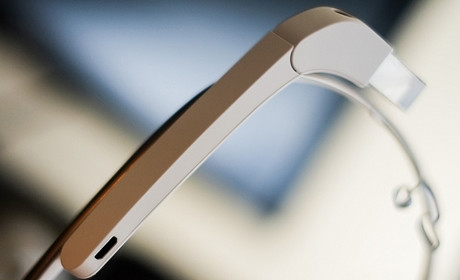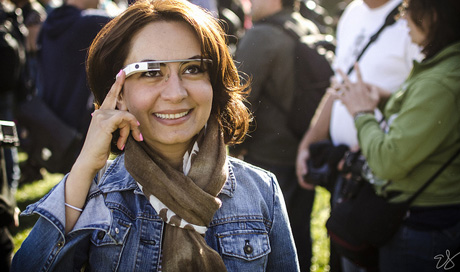
With Samsung unveiling its latest smart watch, Samsung Gear S, and Apple announcing the Apple Watch for early next year, wearable devices are becoming more available to the public.
News organisations have already been experimenting with news apps on wearable devices, and John Hashimoto, senior director of product development at CNN, told Journalism.co.uk CNN had a presence on wearables as a way to test the waters.
"As the device makers become more creative or innovative, they push us and other providers of content to be more innovative and creative about how our core competencies can be leveraged in that way as well," he said.
A new way of reading
When Samsung Gear S hits the shelves in October, it will come with the Financial Times's app fastFT. The app was built in partnership with technology company Spritz, who developed a method of reading where text is delivered one word at a time, at a speed chosen by the reader.
Maik Maurer, co-founder and CTO of Spritz, said "this was a perfect fit with fastFT because they want to deliver fast information, as the name says, and they want to do it in all possible situations".
He said collaborations with more publishers were in the pipeline, like German newspaper Süddeutsche Zeitung.
"It's a focused reading which is meant for on-the-go reading, it's not a replacement of traditional reading," he said. "Spritz is for these new use cases where you cannot read in a different way."
While Spritz was just a piece of technology, it opened up new degrees of freedom by only using a limited space for reading. By not covering the whole of the display with text, publishers "can cover the rest of the screen with pictures and other information", he said.
Breaking news and top headlines
CNN has built news apps for Google Glass and Samsung Gear, and has a presence on Android Wear, which supports its existing mobile push alerts from the smart phone app.
CNN's user generated content platform iReport also works on Google Glass. The app takes advantage of Glass's photo and video capabilities, and allows users to submit content which is then assessed by editors to be distributed online or even broadcast.

By EricaJoy on Flickr. Some rights reserved
Hashimoto said CNN's Glass news app sends out the "standard news headlines", the top headlines of the day as well as videos. "We did not create distinctive content for Google Glass," he said, "it is the same content both in text and in video from what is going through to Android apps, iOS apps and so on."
CNN's priority for news apps on wearable devices is delivering breaking news. "Obviously you're looking at a screen size that doesn't lend itself to the kind of scroll-ability and ease of use that you have with a phone or certainly a website," he said.
"So it's typically annotated headlines, [and] in the case of Glass, because of the form factor, very short video. We would never port a longform video to a Glass, it just doesn't make sense."
The smart watch app delivers a stream of headlines that could be developed to include an additional paragraph of text.
Hashimoto said he expected to see smart watches giving users the ability to read the stories they discover on wearable device in full length on their mobile phone or tablet.We believe that audio will play a huge role in [wearables]Ian Mendiola, co-founder, Umano
This "pairing experience" meant the smart watch acted as "an entry point to richer, deeper content on their larger mobile device", he said.
Audio on the go
As some publishers are using new reading methods to get text on wearables, audio is another medium that could make longer written pieces more accessible on the devices. Umano is a platform that brings its users articles they would normally read, "in a professionally narrated format", said co-founder Ian Mendiola.
Umano is also available on Google Glass, and Mendiola said he was looking at wearables because "we optimise for the hands free experience".
"We believe that audio will play a huge role in that," he said, "because the advantage of audio is that you don't require a larger screen that you have to look at.This interconnectivity of devices is where wearables really become valuableMaik Maurer, co-founder, Spritz
"We have to really rethink how we consume the content that we're used to reading, just because the form factors are so different."
He said the interaction between users and wearable devices was also expected to be audio-centric, with voice feedback playing a big role.
Interconnected news
But at Spritz, Maurer said audio was slower than reading, and inconvenient in certain situations. "Just imagine you're sitting in a meeting," he said, "you will not take your headphones out just for getting the news, it's not possible."
Instead, he said wearables would work best as part of an "interconnected experience and delivery of news". People would start reading the news on a tablet at home for example, and continue on a smart watch during their commute because public transport could be too crowded to use a bigger device.
"This interconnectivity of devices is where wearables really become valuable, not for being the only device for the whole day," he said.
Hear more from Hashimoto, Maurer and Mendiola in this recent Journalism.co.uk podcast
Free daily newsletter
If you like our news and feature articles, you can sign up to receive our free daily (Mon-Fri) email newsletter (mobile friendly).
Related articles
- Five key takeaways from the UK select committee on the future of news
- From Reuters to The New York Times, Big Oil pays 'most trusted media brands' to push greenwashing
- What do audiences need from climate journalism?
- How the Financial Times is broadening its portfolio
- Why newsroom transformation is key to subscription growth









